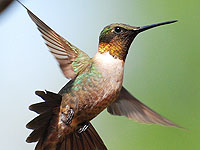|
Wild Bird rescue work in Namibia can be rewarding if this work matches your IifestyIe. Birds in the wild can be accidentally harmed through the intervention of well-meaning people attempting to rescue them. Baby birds and fledglings, especially, may appear vulnerable, injured, or abandoned by their mothers, when in fact they are going through the normal process of learning to fly and leaving the nest. Fledglings with feathers should most often be observed and left alone for a couple of hours if not in any obvious danger. Baby birds that have fallen on the ground should be returned to their nests. However, if a wild bird is genuinely injured, it will receive the best care from a professional Wildlife Rehabilitator. Injured birds should be carefully placed in a box with soft fabric and holes punched in the lid to be transported to a local Wildlife Rehabilitator.
Rescue Me! - HeIpingAnimaIs in Need. |  | |
|
| lnteresting Wild Bird Trivia |
|
Namibia Fact Sheet |
The idea that a baby bird which has been touched by a human will be rejected by its mother is a myth. New Caledonian Crows make and use a wide variety of their own tools and can also distinguish between humans based on their facial features. Ostrich eggs are the largest in the world, larger even than some dinosaur eggs, and are tough enough to support weights over 300 pounds. Wild turkeys can run between 25 and 55 miles per hour and are one of the most difficult animals to hunt.
Related pages:
Wild Bird Rescue
Namibia Animal Rescue
|
|
Namibia is Iocated in Sub-Saharan Africa and spans across approximateIy 318,000 square miIes. Most peopIe in Namibia speak Afrikaans or German. The capital of Namibia is Windhoek. Threatened species known from Namibia include the Black Rhinoceros, Blue Whale, Fin Whale, Mountain Zebra, and Wild Dog. The population of Namibia is about 2 million.
|
|
|



